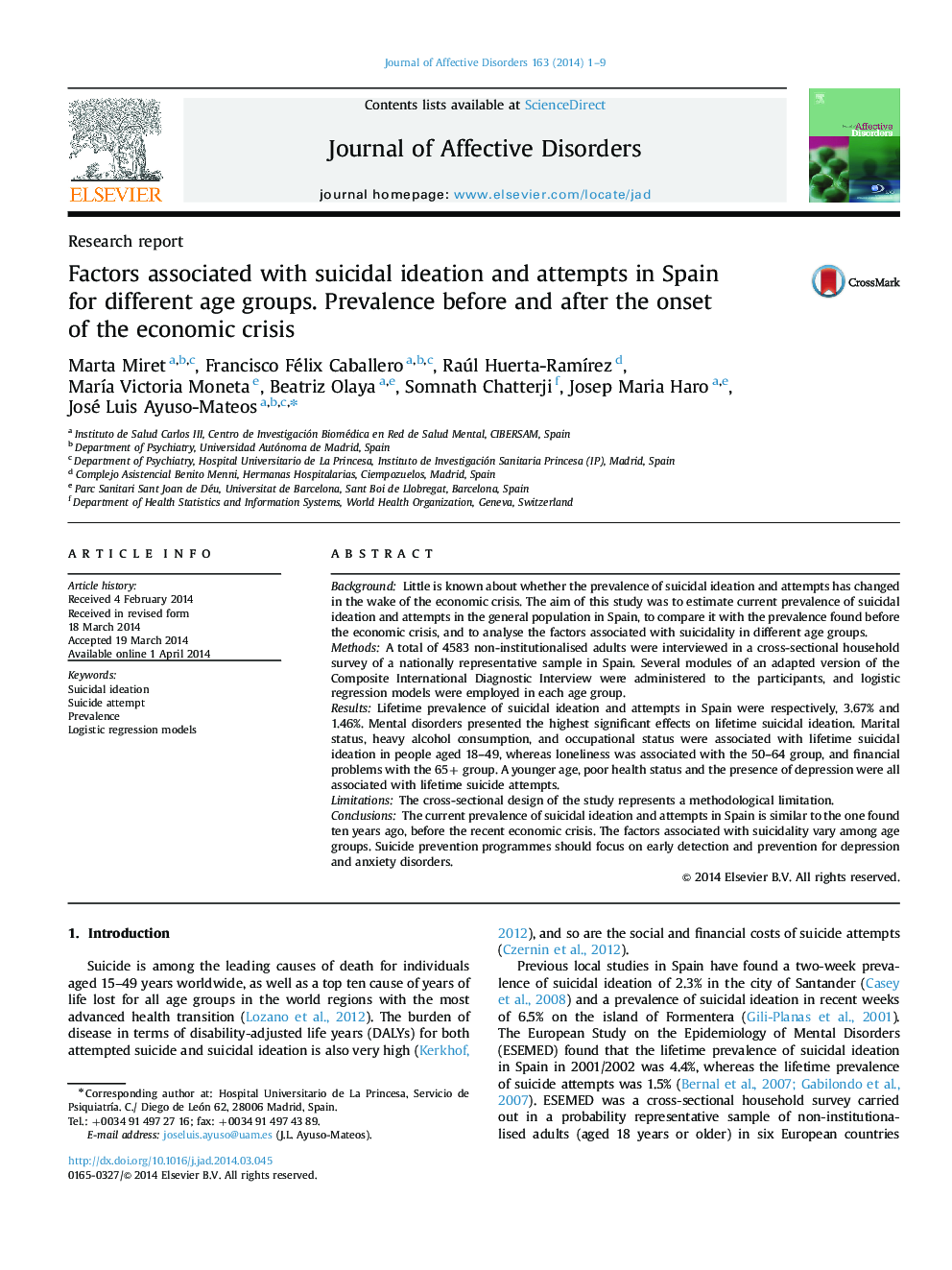| Article ID | Journal | Published Year | Pages | File Type |
|---|---|---|---|---|
| 6233056 | Journal of Affective Disorders | 2014 | 9 Pages |
BackgroundLittle is known about whether the prevalence of suicidal ideation and attempts has changed in the wake of the economic crisis. The aim of this study was to estimate current prevalence of suicidal ideation and attempts in the general population in Spain, to compare it with the prevalence found before the economic crisis, and to analyse the factors associated with suicidality in different age groups.MethodsA total of 4583 non-institutionalised adults were interviewed in a cross-sectional household survey of a nationally representative sample in Spain. Several modules of an adapted version of the Composite International Diagnostic Interview were administered to the participants, and logistic regression models were employed in each age group.ResultsLifetime prevalence of suicidal ideation and attempts in Spain were respectively, 3.67% and 1.46%. Mental disorders presented the highest significant effects on lifetime suicidal ideation. Marital status, heavy alcohol consumption, and occupational status were associated with lifetime suicidal ideation in people aged 18-49, whereas loneliness was associated with the 50-64 group, and financial problems with the 65+ group. A younger age, poor health status and the presence of depression were all associated with lifetime suicide attempts.LimitationsThe cross-sectional design of the study represents a methodological limitation.ConclusionsThe current prevalence of suicidal ideation and attempts in Spain is similar to the one found ten years ago, before the recent economic crisis. The factors associated with suicidality vary among age groups. Suicide prevention programmes should focus on early detection and prevention for depression and anxiety disorders.
